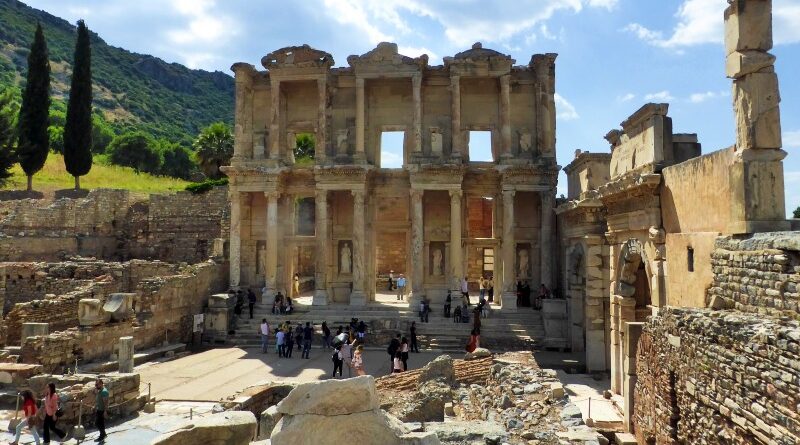Ancient Ephesus: An Easy Day Trip From Izmir
In this destination guide, we visit Ancient Ephesus on a day trip from Izmir.
Izmir day trip
One of the most famous sights in all of Turkey is Ancient Ephesus (called Efes in Turkish).
The awe-inspiring ruins of this ancient Greek city are located 70 kilometres away from Izmir, making it the perfect destination for a day trip.
Of course, Ephesus can be visited as well from other places in the region such as the popular beach resort of Kuşadası, which at a distance of just 23 kilometres away is an even more convenient jumping-off point.
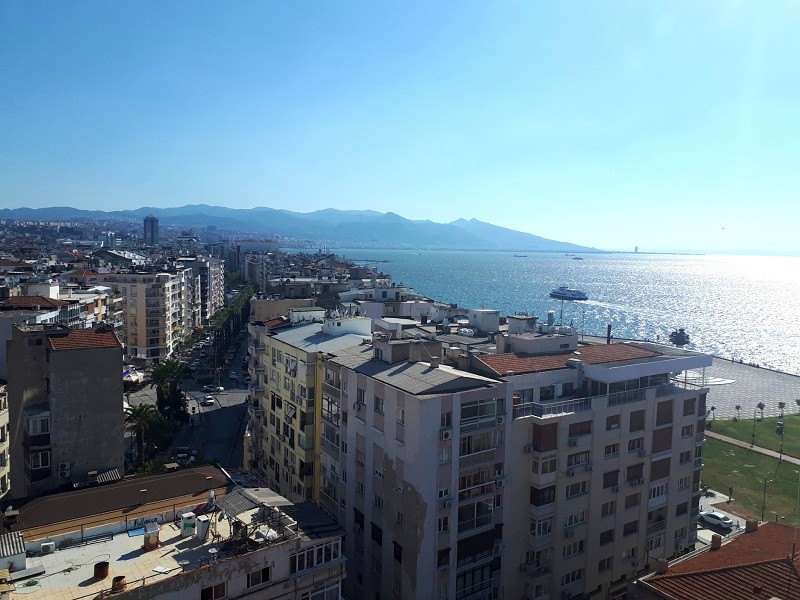
Ephesus public transport
It’s extremely easy to organise your own day trip from Izmir to Ephesus using public transport.
There really is no need to go on an organised tour and pay more than you should!
Although you can go by bus, Izmir’s ‘otogar’ (bus station) is not the most tourist-friendly place as it’s located far outside the city centre and requires you to take a local bus or taxi to get there.
It’s far more convenient to take the train as Izmir’s railway stations are not only centrally located but are also better connected to places all over the city by metro and tram.
To reach Ephesus, you can take one of the three morning InterCity trains departing Izmir’s Basmane station or opt for a more or less hourly suburban train from Alsancak station.
These trains all call at the modern-day city of Selçuk, the station and town nearest to Ephesus.
Train fares are cheap and won’t cost you more than 2 or 3 euro one-way.

Ephesus entrance gate
From the train station of Selçuk it’s either a short taxi ride or leisurely forty minute walk to reach the Ephesus entrance gate.
There is a separate footpath along the main road to Ephesus and plenty of shade under the trees, making this a safe and pleasant option.
Ancien Ephesus is a sprawling site and it’s worth it to arrive early in order to beat the tour bus crowd and perhaps more importantly – the scorching heat if you happen to visit in summer.
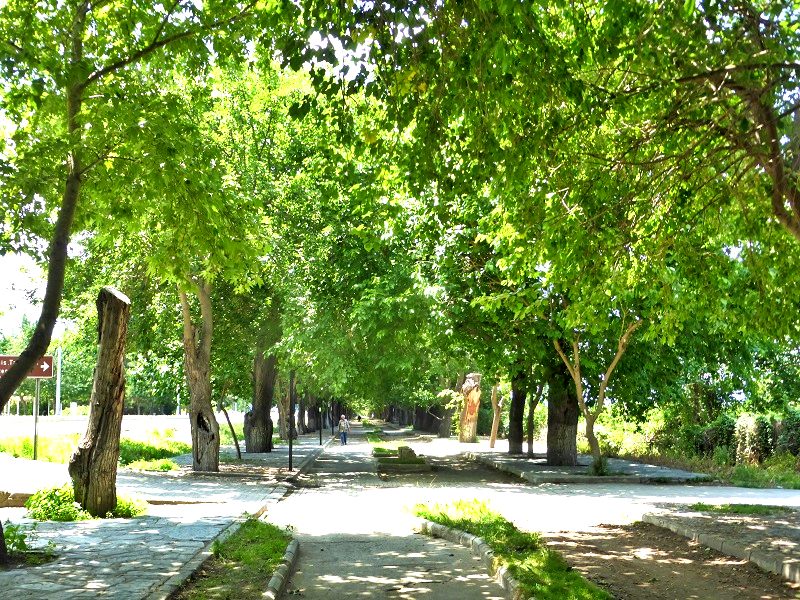
Ephesus history
Ephesus was founded in the 10th century BC by Greek colonists who settled on the western coast of Anatolia.
It was one of the most important cities of classical Greece and well-known for the nearby Temple of Artemis, one of the seven ancient wonders of the world.
In 129 BC, Ephesus came under control of the Romans after they conquered big swaths of Asia Minor and some of the most famous sights you see are from this era.
Under Byzantine rule in the 5th and 6th century AD, Ephesus remained one of the most important cities in the empire.
However, fortunes changed when an earthquake levelled Ephesus in 614 AD and the city lost its direct access to the Aegean Sea when the harbour gradually silted up.
Ephesus declined further after it was sacked three times by invading Arabs in the 7th and early 8th century and never regained its former glory.
By the 15th century, the city was completely abandoned.
Ephesus’ former glory can however still be seen when you visit the archaeological site, which was inscribed by UNESCO on the World Heritage list.

Amphitheatre
Once you have entered the archaeological site you will likely first come across the huge amphitheatre.
The theatre, which had a capacity of around 25,000 spectators, was one of the largest of the ancient world and is still a formidable sight to behold.
Even though the theatre is spectacular, I got slightly distracted by the many cute cats strolling around Ephesus.
The big number of community cats is something which I always love when visiting countries like Turkey or Greece.
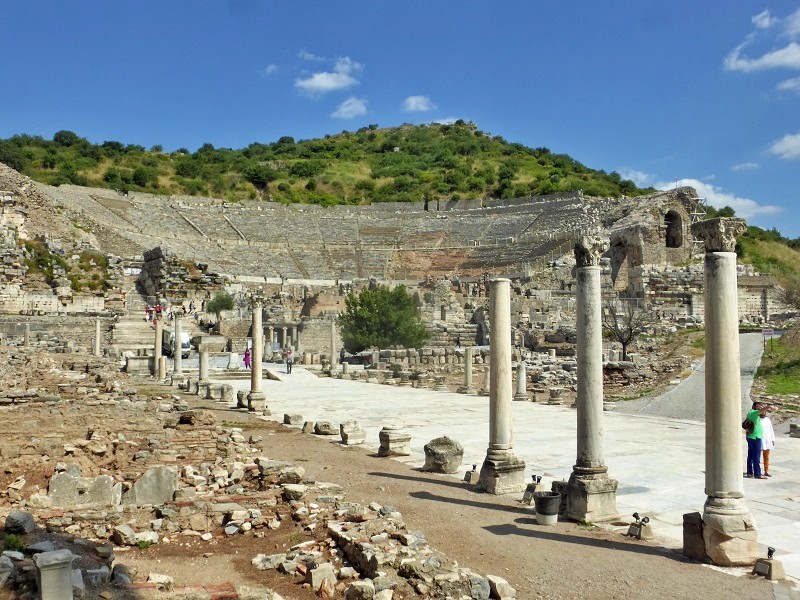



Library of Celsus
An old cobblestone road called Marble Street links the amphitheatre with the ancient Agora and the most famous sight of Ephesus: The Library of Celsus.
It’s quite likely that you will have seen images of the Library of Celsus at Ephesus before as the building is often used as the cover picture on guide books and travel brochures about Turkey.
The library was completed under the reign of Roman Emperor Hadrian in 117 AD and was dedicated to a former senator and proconsul named Tiberius Julius Celsus Polemaeanus.
Although the library’s interior and all its books were destroyed in a fire in 262 AD, the building’s façade is one of the best preserved in all of Ephesus.
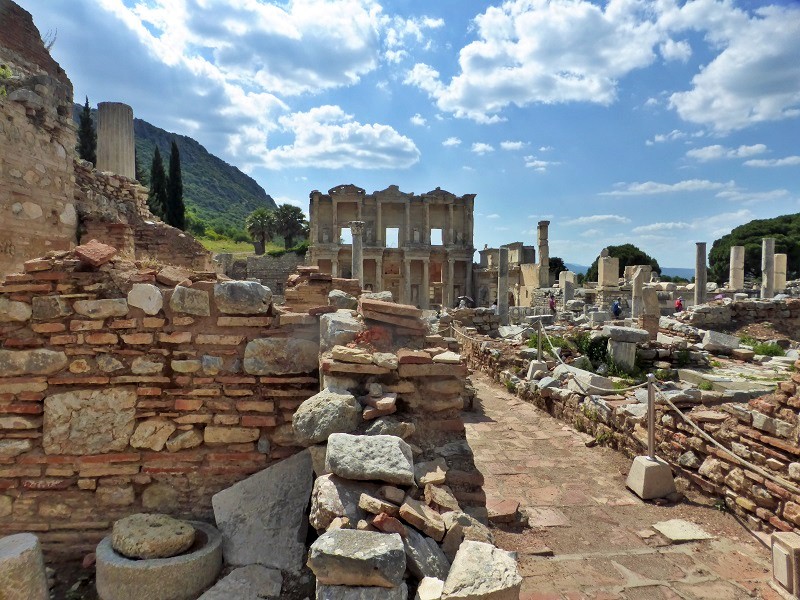
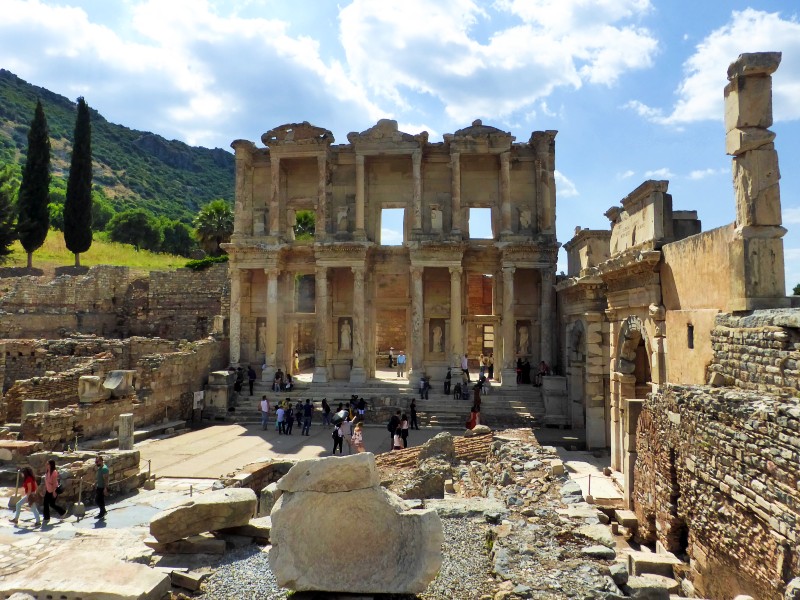

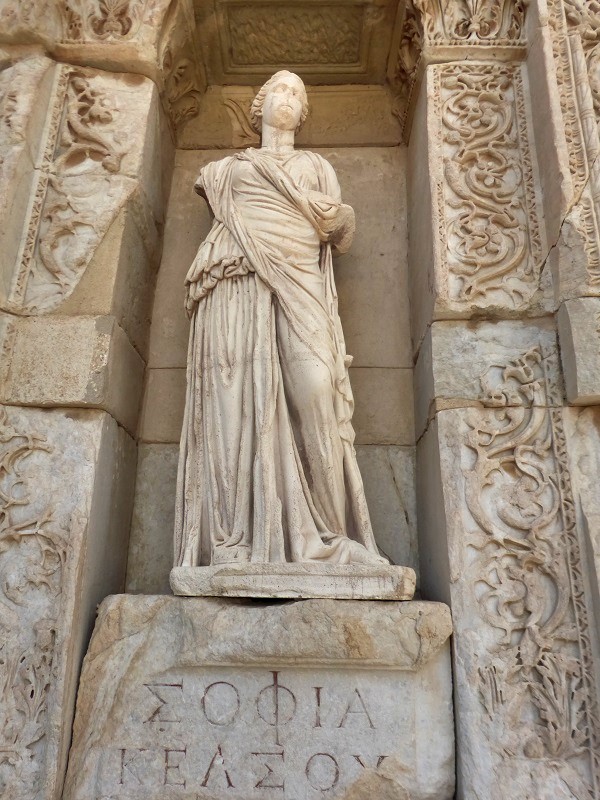
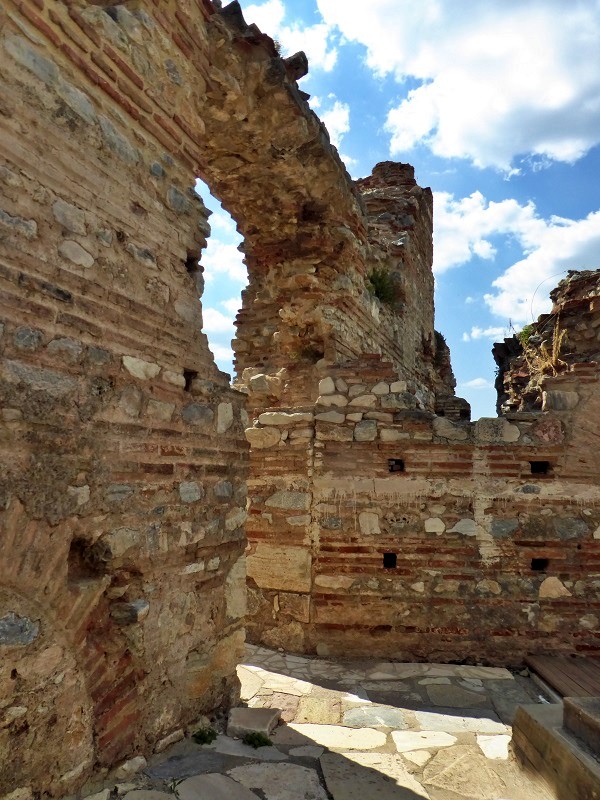
Other sights at Ephesus
There are dozens of other ancient monuments, tombs, statues and ruins to admire at Ephesus.
Two other beautiful sight you should see at Ephesus are the Temple of Hadrian with its delicate arch and columns and the Odeon.
Both are on uphill walk on Curetes Street from the Library of Celsus.
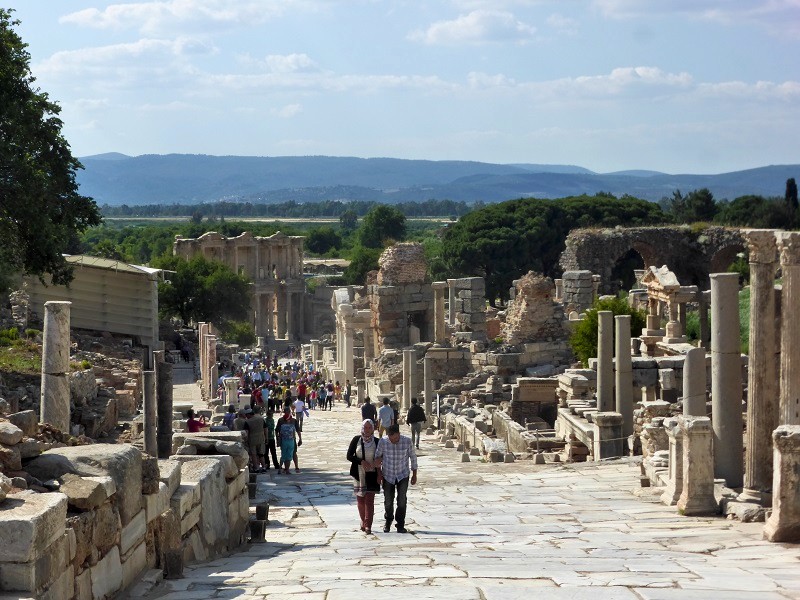


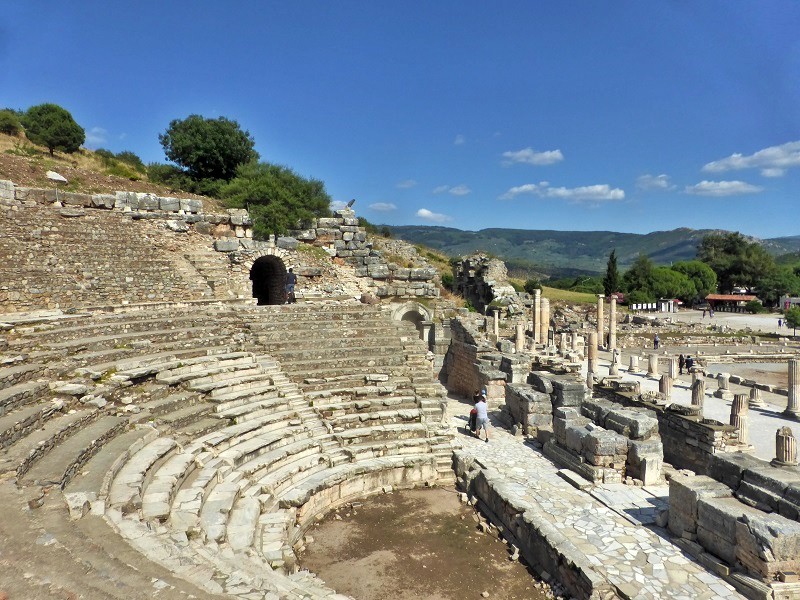
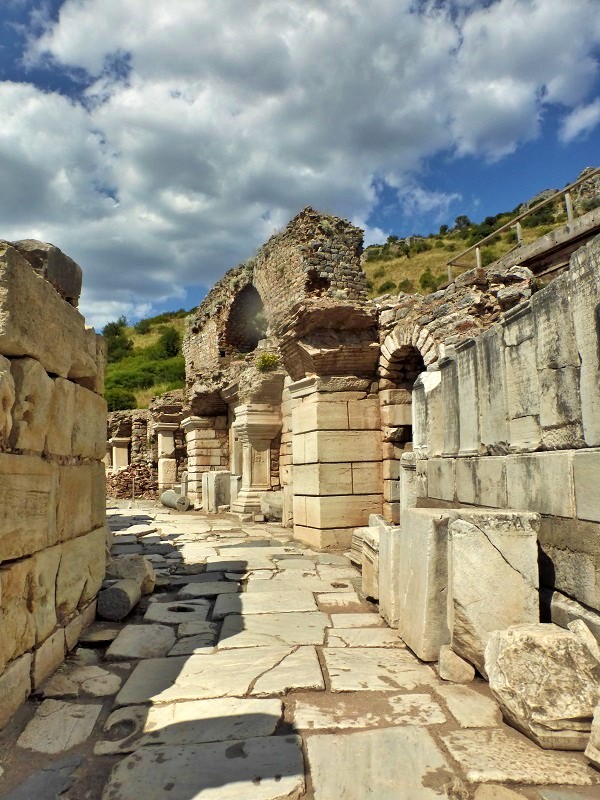
Walking around
Ancient Ephesus is a large archaeological site and taking it all in easily takes a couple of hours.
Visiting the main sights such as the amphitheatre and the Library of Celsus is straightforward enough, but it takes a bit more effort to reach the outer sights of the complex.
Although it’s great fun to walk on ancient Greek and Roman cobblestone roads, they are however not the most accessible for those with mobility issues.
During my visit I saw plenty of elderly people struggle with the rough and uneven surface as well as the summer heat, so be prepared if you want to do some serious exploring.
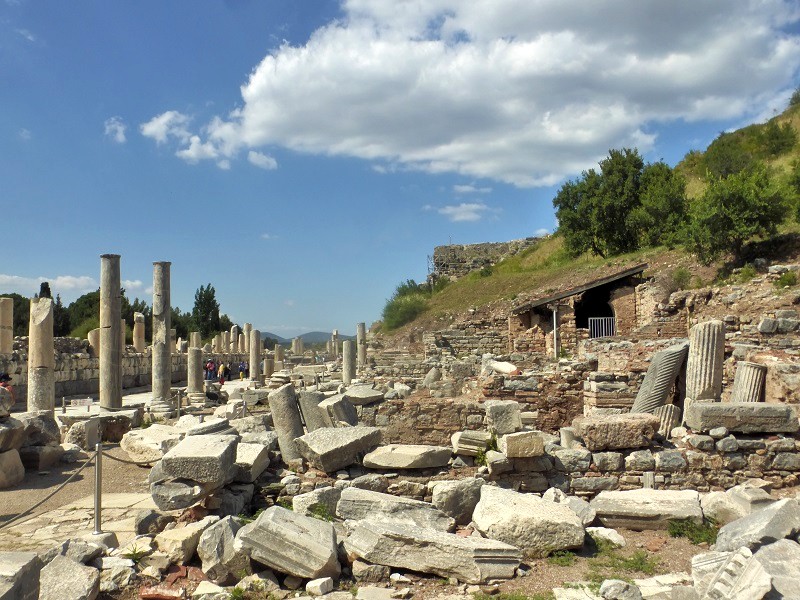

Şirince
A visit to Ephesus can be easily combined with Şirince on a day trip from Izmir if you start early enough in the morning.
Şirince, a scenic hilltop town famous for its wine, is just a short bus ride away from Selçuk.
Besides Ephesus there are many more day trips you can make from Izmir, so check out the little Izmir guide I wrote if you want to get some more ideas about possible activities.
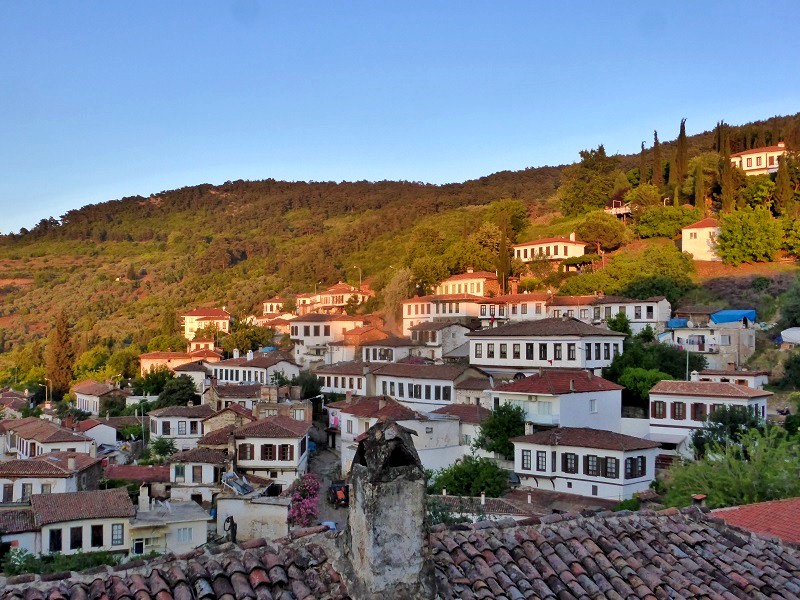
Conclusion
Ephesus is one of the most famous sights in all of Turkey and one of the world’s most awe-inspiring archaeological sites.
Whether you are based in Izmir or in one of the nearby beach resorts such as Kusadasi, it’s an absolute must to make a day trip to Ephesus.
If you are based in Izmir it’s perfectly doable to organise your own day trip by public transport as there are frequent bus and train connections.
When you start early enough in the morning, you can easily combine a visit to Ephesus with the lovely little hilltop town of Şirince.
Trip report index
This article is part of the ‘Khachapuri & Kebabs: A Summer Trip to Georgia and Turkey‘ trip report, which consists of the following chapters:
1. Review: Wizz Air Bucharest to Kutaisi (Airbus A320)
2. A Day in Kutaisi, the Charming Capital of Imereti
3. Caves, Churches and Monasteries – A Kutaisi Day Trip
4. Review: My Warm Guest House, Batumi, Georgia
5. Beautiful Batumi – The Pearl of Georgia’s Black Sea Coast
6. From Georgia to Turkey: Batumi to Kars by Bus
7. Review: Kars Konak Hotel, Kars, Turkey
8. A Day Trip From Kars to the Ancient Armenian City of Ani
9. Goose, Cheese and Russian Remnants: A Visit to Kars, Turkey
10. Review: Dogu Express Night Train Kars to Ankara, Turkey
11. Review: AnadoluJet Ankara to Izmir (Boeing 737-800)
12. Review: Ege Palas Business Hotel, Izmir, Turkey
13. Izmir: Turkey’s Most Liberal and Liveable City
14. Ancient Ephesus: An Easy Day Trip From Izmir (current chapter)
15. A Visit to the Hilltop Wine Village of Sirince
16. A Beach Trip From Izmir to Cesme and Ilica
17. Foça: A Beautiful Seaside Town to Visit From Izmir
18. Flying Back Home With Atlasglobal and TAROM

